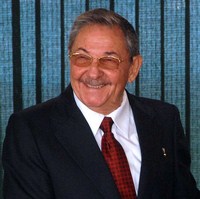Editor’s note: This is the first of a two-part series on Cuba’s economic reforms. Part I looks at the reforms to date. Part II will examine the challenges facing future efforts.
Since assuming office in July 2006, Cuban President Raul Castro has been on a crusade to bring the Cuban economy into the 21st century. The hyper-centralized model imported from the Soviet Union in the 1960s "doesn't even work for us anymore," Fidel Castro admitted.
When Raul took over, the Cuban economy had yet to fully recover from the "Special Period" -- the deep depression that followed the Soviet Union’s collapse and the loss of $3 billion in annual aid. Although Cuba’s economy has been growing gradually since the 1990s, the gains have been concentrated in tourism and medical services for export. The actual production of goods on the island still lags below 1989 levels, and many state enterprises operate at a loss. Agricultural production has been so poor that this agriculturally well-endowed island has to import 70 percent of its food at a cost of $1.5 billion every year.

